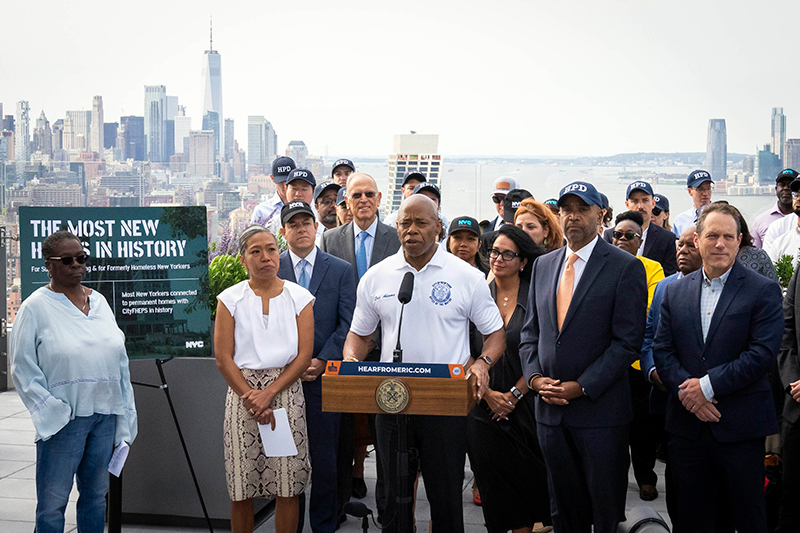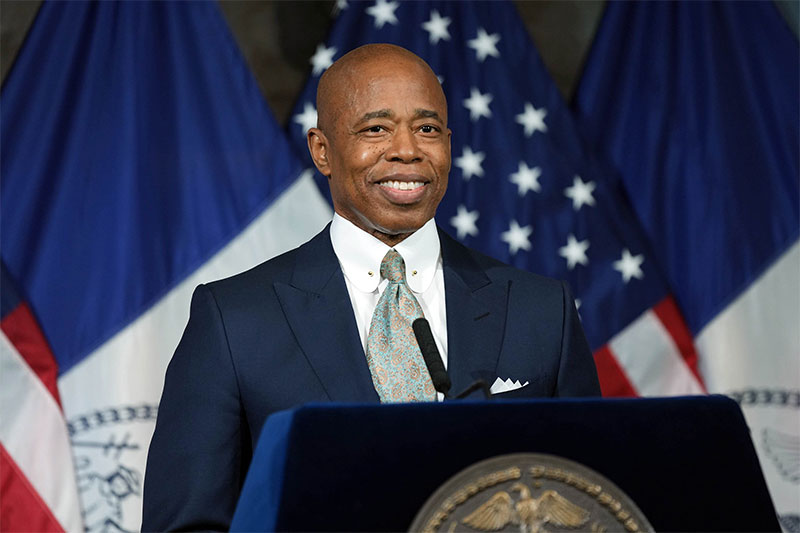Part of Ongoing Effort by Adams Administration to Achieve Moonshot Goal of 500,000 New Homes Over Next Decade
Our Bureau
New York, NY
New York City Mayor Eric Adams and New York City Department of Housing Preservation and Development (HPD) Commissioner Adolfo Carrión today announced the implementation of two critically-needed tools to address the city’s housing crisis. The tools — secured as part of the Adams administration’s successful advocacy in Albany this session — will incentivize the construction of multifamily rental construction through a new program called “Affordable Neighborhoods for New Yorkers” (485-x), which replaces the previous 421-a (16) tool, extends the 421-a (16) deadline for projects already underway, and creates a program to incentivize conversion of commercial buildings to affordable homes. The implementation of these tools — paired with the most pro-housing updates in the history of the city’s zoning code through the administration’s “City of Yes for Housing Opportunity” proposal — will help meet demand for new housing and get closer to reaching Mayor Adams’ “moonshot” goal of 500,000 new homes by 2032.
“To meet the challenge of our housing crisis, we need to use every tool in the toolbox to complete one simple task: build more,” said Mayor Adams. “The implementation of these new tools in such a short amount of time is another example of the rapid pace in which our administration is moving to deliver affordable housing faster, smarter, and more effectively. But we are not stopping there. ‘City of Yes for Housing Opportunity’ is not only the most ambitious zoning reform in our city’s history but presents another potential tool to help us build our way out of this crisis. Working families need affordable housing now — and we are ready to answer their call.”
“This year, our partners in Albany gave New York City powerful new tools to address the housing crisis, and the city is wasting no time in putting them into action,” said Deputy Mayor for Housing, Economic Development, and Workforce Maria Torres-Springer. “The steps we’re taking today will encourage new, permanently affordable housing across the city and new homeownership opportunities across the outer boroughs. Our message to New Yorkers is clear: The Adams administration is using every tool to lower housing costs and deliver for working families.”
“As New Yorkers deal with rising rents due to a historic low in available homes, we must implement every possible tool to build more housing. Our administration’s rapid implementation of these new tools will not only deliver the homes New Yorkers need, but ones they can afford,” said New York City Executive Director of Housing Leila Bozorg. “I am grateful to the incredible public servants at the Department of Housing Preservation and Development and the Housing Development Corporation for their fast, thoughtful, and tireless work to address our housing crisis and deliver for New Yorkers.”
“Today’s announcement represents an essential step in our mission to combat New York City’s unprecedented affordable housing shortage,” said New York City Housing Development Corporation President Eric Enderlin. “I want to thank our colleagues in Albany for providing us with the resources that will expand the city’s affordable production and strengthen our ability to meet the housing needs of New Yorkers.”
For new construction projects that commenced construction prior to June 15, 2022, the state budget also extended the completion deadline for qualifying projects seeking 421-a (16) tax benefits from June 15, 2022, to June 15, 2031. For projects that participate in this extension, this change also removed the controversial Options C and G, which allowed all affordable units in a project to be restricted at up to 130 percent AMI for projects that participate in the extension.
The “Affordable Housing from Commercial Conversion Tax Incentive Benefit” (467-m) program will also be implemented by HPD. Last week, the city released information including an expression of interest form and guidance to inform the establishment of a project’s commencement date. The tax exemption benefit size was structured to encourage owners to start construction quickly to meet the urgency of the housing crisis.
The majority of underused office space is located in Manhattan below 96th Street, known as the Manhattan Prime District. This includes many neighborhoods with higher-than-average rents, extremely low rental vacancies, and particularly expensive construction costs associated with the area’s density. In other words, it is difficult to build new housing in an area that sorely needs new affordable apartments, which is why the program offers the highest tax benefits to conversions in Manhattan below 96th Street. Regardless of location, the tax exemption decreases as the program ages.
The Adams administration successfully advocated for new tools in this year’s New York state budget that will spur the creation of urgently needed housing. These include a tax incentive program to encourage office conversions to create more affordable units, lifting the arbitrary “floor-to-area ratio” cap that held back affordable housing production in certain high-demand areas of the city, and the ability to create a pilot program to legalize and make safe basement apartments.


























